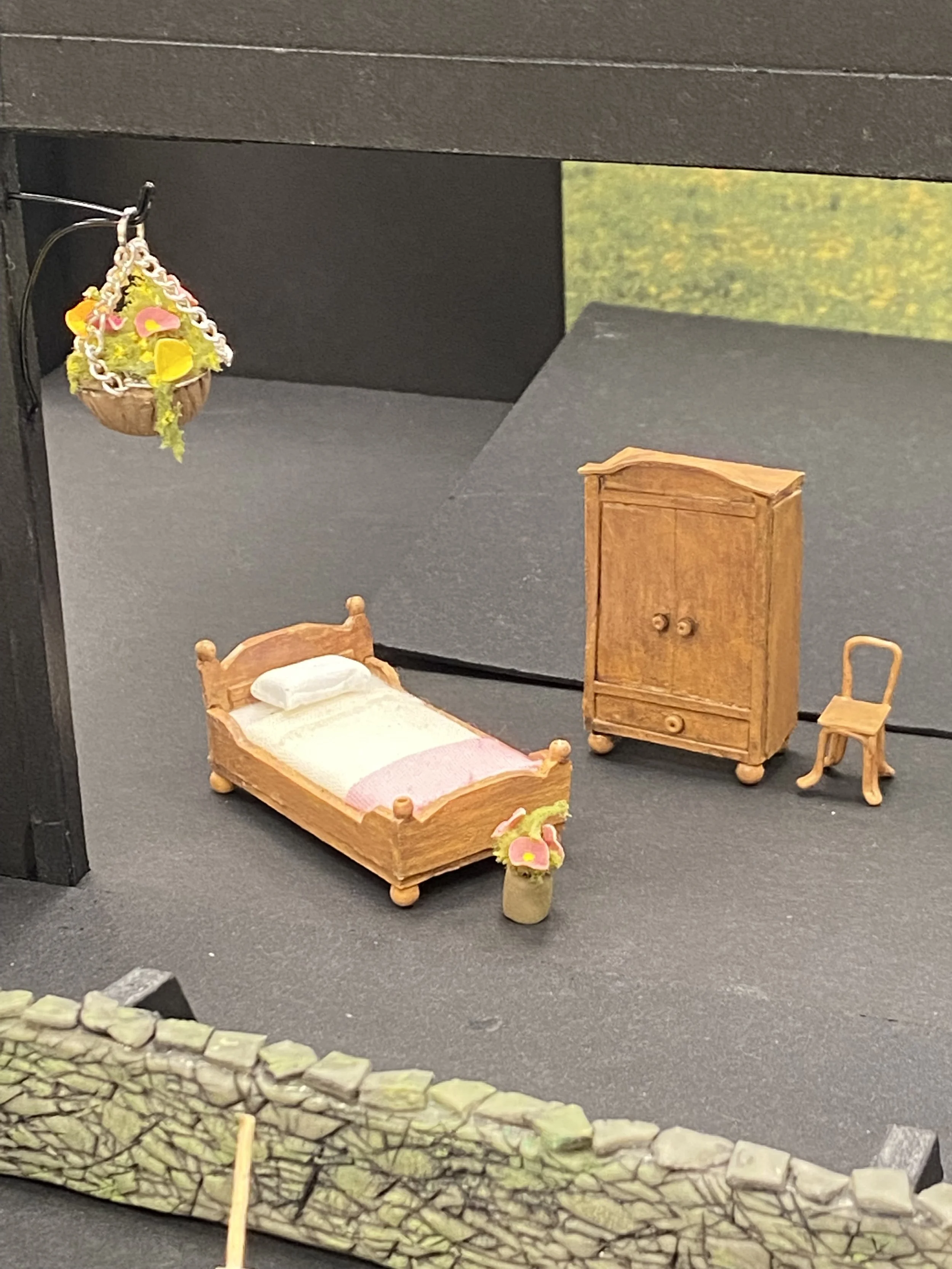Spring Awakening Maquette
Set Design Class 2022
Although a small scene, I wanted to portray the sterility of the House of Correction Melchior is sent to, further contrasting the brightness of Act 1. I drew influence from a photograph of an early 20th century asylum which effectively reflects the mood I wish to achieve, which will be projected, alongside bright white lighting. To match the photograph, the costume and set will also be black and white. I want the stage to seem as large as possible to make the actors appear smaller, reflecting Melchior's loneliness in the asylum.
This combination of large and small, use of contrast and visual symbolism aims to deepen the tragedy of Spring Awakening, evoking stronger emotional reactions of the audience to create a truly memorable theater experience.
I was also proud to see my designs for this project displayed at the Performance Design Exhibit at Image Arts.
While working on my initial plans for my designs I wanted to bring focus to the story as originally intended, using a combination of both classic theater design along with modern elements. The deep rooted contrasts in theme within Spring Awakening allow for a variety of visual symbolism throughout the design, which I wanted to take full advantage of.
I wanted to draw focus to the beauty of German design and countryside to highlight the setting's culture and time period. As the play progresses, colors are continuously muted and lighting is dimmed to reflect the mood and decline of innocence. Initial bright, light colors reflect childhood innocence as well as springtime in southern Germany, achieved through projections, flowers, and lighting. Furniture, costumes, and props appear accurate to the time period, and along with the use of lighting, projections, and audio, the environment is achieved without the need for larger set pieces, allowing for ease in the many set changes.
I wanted to physically separate Wendla and Melchior, assigning stage right to Wendla and stage left to Melchior, with neither character crossing into the other's space. In situations where both characters are in the same scene, Melchior will always be on Wendla's right. This will contrast Act 3 scene 7, when Melchior will stand to the left of Wendla’s grave and exit stage left to symbolize his violation of her. I decided to show this symbolic violation in this scene, rather than when they are both in the haymow, as the scene is much smaller, I do not wish to show her actual assault on stage, and Melchior isn't fully aware of the effect of his actions until he sees Wendlas grave. This separation is effectively achieved by expanding the apron allowing for a much larger playing space.
I wanted to visually differentiate Wendla from the rest of the characters while highlighting her innocence and femininity. In an effort to achieve this, Wendla is the only character to wear pink, seen in her bedroom, costume, and eventually at her gravestone flowers for visual continuity. Her bedroom set also utilizes a light coloured wood, while all other wooden furniture is of a darker colour. Unlike the rest of the design elements, Wendla will not experience ‘darkening’ of the set, and her design elements remain bright as they did at the beginning of the play. This shows how, despite her violation and eventual death, Wendla was not privy to the others' maturing. She died unaware of what happened to her, as her mother refused to tell her about procreation in an attempt to preserve her innocence.







